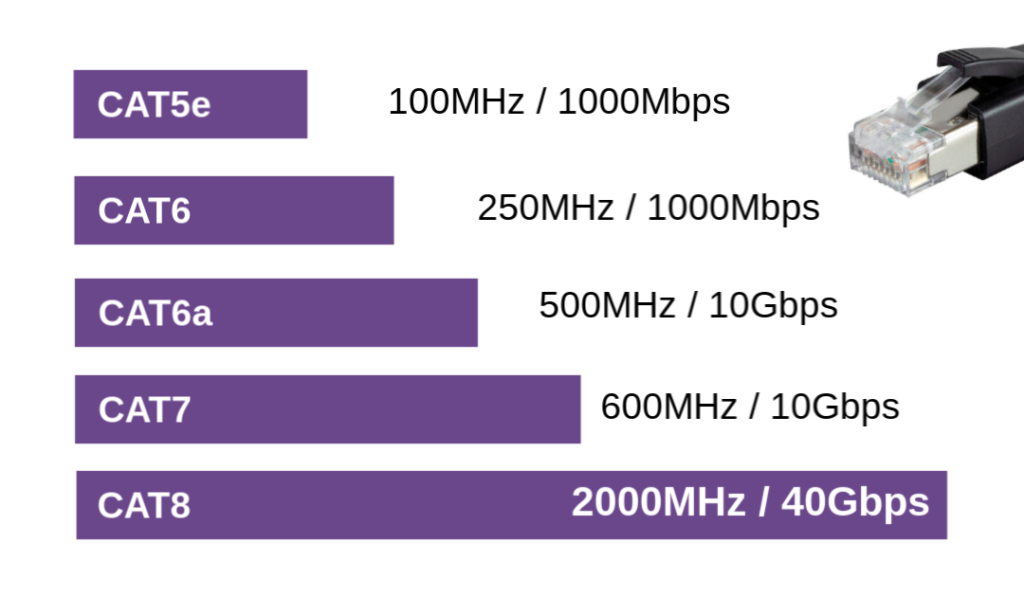We were told that Ethernet was going to be a thing of the past. Google tried to make fiber optics the new standard for home internet connections, and it was an obvious choice for scaling industrial applications. Somehow, Ethernet has hung in there, and new iterations arise every few years that continue to push the envelope of traditional copper wires. Today, we’re going to cover the latest iteration: Cat8. We’re going to start with the basics, but in a few short minutes, you’ll have a clear picture of what Cat8 is, how it works and why you need to be thinking about it.
The reason Cat8 is turning heads is because it is jumping several iterations in performance. It uses 2 Ghz signals to move data from 25 Gbps (Cat8.1) to 40 Gbps (Cat8.2). It’s a serious upgrade, and the implications are turning heads across IT fields. Category 8, or just Cat8, is the latest IEEE standard in copper Ethernet cable. It represents a significant leap in data transfer speed over the earlier Cat7 and Cat6a cables. It uses standard RJ45 connectors and is backwards compatible with previous standards.

One of the key differences in Cat8 cable is its shielding. As part of the cable jacket, a shielded or shielded twisted pair (STP) cable employs a layer of conductive material to protect the internal conductors from electromagnetic interference (EMI), resulting in faster data transmission speeds and fewer errors. Cat8 cables go one step further, wrapping each twisted pair in foil to virtually eliminate crosstalk and enable higher data transmission speeds. The result is a heavier gauge cable that is quite rigid and difficult to install in tight spaces.
Category 8 is the next generation twisted-pair copper cabling specification that is still being finalized (as of February 2016), featuring two conductor pairs with maximum signal rates at 2GHz (2000 MHz) – four times the Cat6a cable bandwidth of 500MHz!!!
